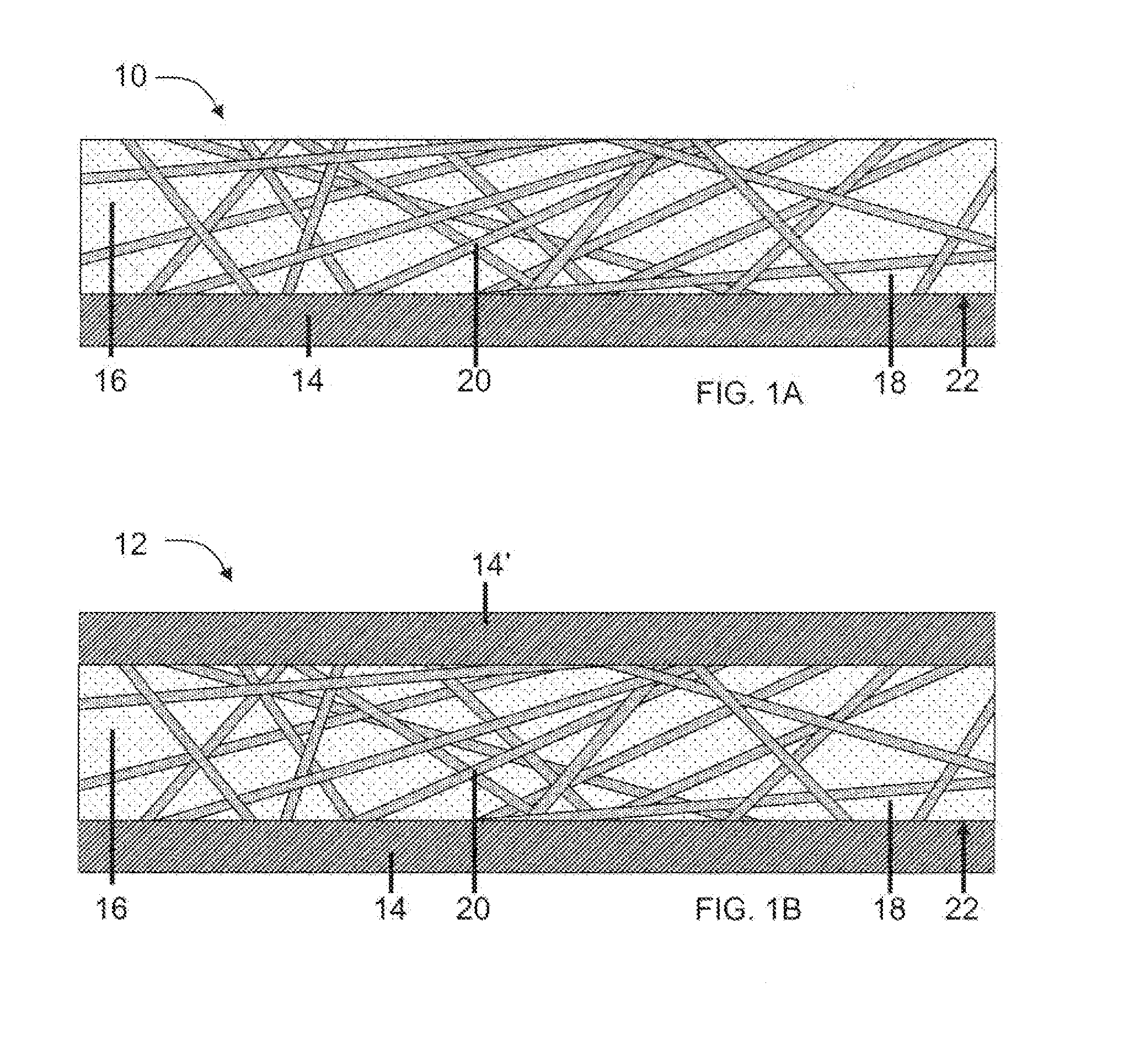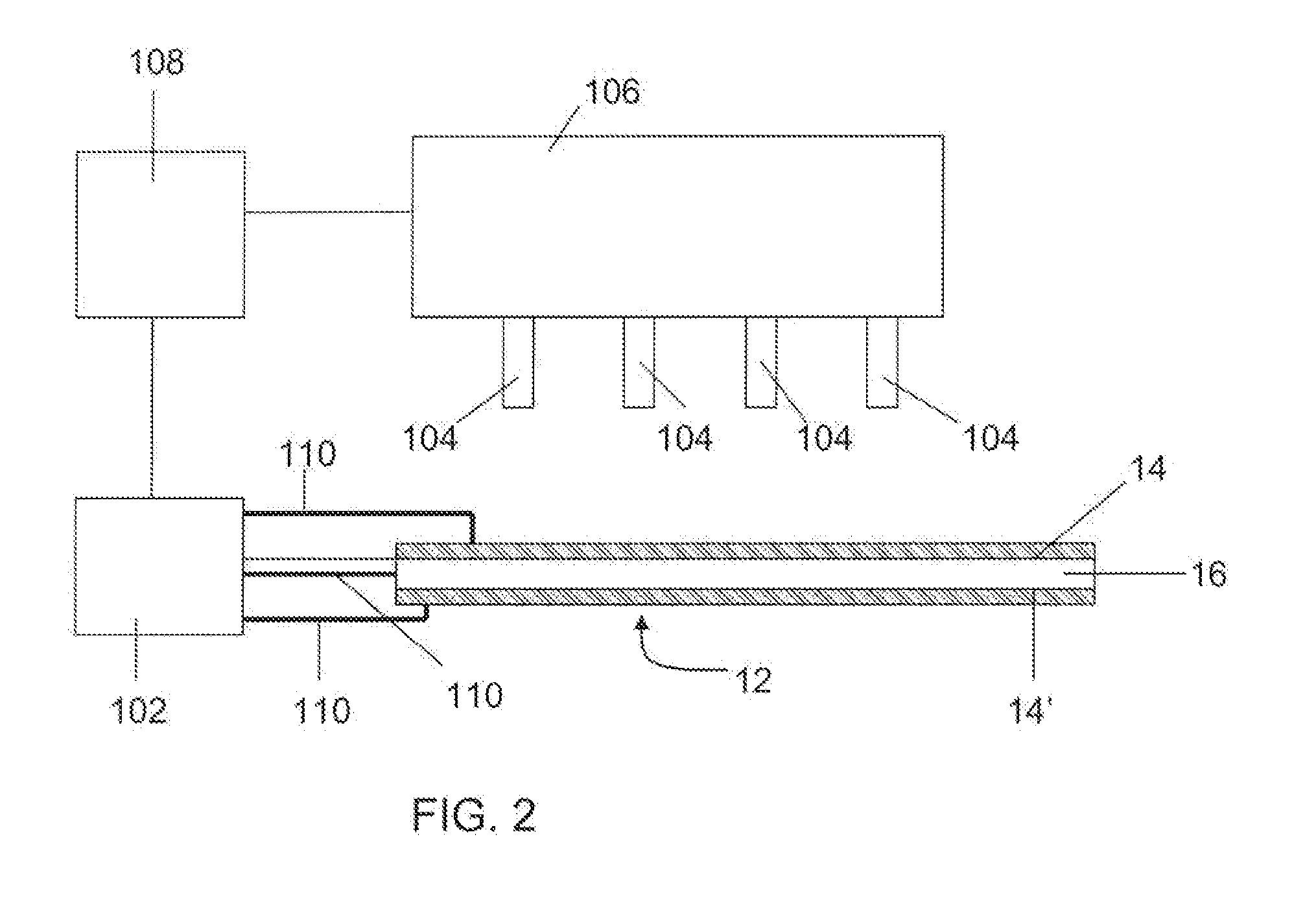Formable light weight composite material systems and methods
a composite material and light weight technology, applied in the field of fiberfilled polymeric materials and composite materials, can solve the problem of difficult proposition of having a “one size fits all” material system, and achieve the effect of reducing the transmission of sound, high strength to weight ratio, and attractive performance characteristics
- Summary
- Abstract
- Description
- Claims
- Application Information
AI Technical Summary
Benefits of technology
Problems solved by technology
Method used
Image
Examples
example 1
[0131]A filled thermoplastic material is prepared by mixing about 15 volume % low carbon steel fibers having a diameter from about 4 to about 40 μm, and a length from about 1 to about 10 mm and about 85 volume % of a copolyamide of about 50 wt. % nylon 6 and about 50 wt. % nylon 6,9 (the copolymer characterized by an elastic modulus of about 300 MPa measured according to ISO 527-2, a melting point of about 130° C. as measured according to ISO 11357, and an elongation at break of about 900% measured according to ISO 527-3). The filled thermoplastic material is mixed at a temperature from about 190° C. to about 250° C. The filled thermoplastic material is then placed between two sheets of low carbon steel, each having a thickness of about 0.2 mm. The materials are then pressed at a temperature from about 200° C. to about 230° C. with a pressure of about 1 to about 22 MPa. The composite material has a core thickness of the filled thermoplastic material of about 0.4 mm. The composite ma...
example 2
[0132]A composite material is prepared using the same materials, composition, and method as Example 1, except the fibers are replaced with low carbon fibers having a generally rectangular cross-section in the direction transverse to the length of the fibers. The fibers have an average length of about 2.3 mm. The average cross-sectional area of the fibers is about 0.0045 mm2. The ratio of the width to the thickness of the fibers is about 2 to 8. The composite material has a thickness of about 0.8 mm. The composite material is stacked with a sample of cold rolled steel having a thickness of about 0.8 mm. The stack is placed in a spot welding machine between a pair of weld tips having a diameter of about 13 mm. A force of about 2.2 kNt is applied to the weld tips. The resistivity of the composite material in the through-thickness direction is determined while under force of 2.2 kNt. Thus determined, the electrical resistivity of Example 2 composite material is about 0.1 Ω·cm or less. W...
example 3
[0133]A composite material is prepared using the same materials, composition, and method as Example 1, except the metal sheets are replaced by 0.2 mm thick sheets of a high strength steel having a yield strength of about 350 MPa, a tensile strength of about 460 MPa, and an elongation of about 22%. The composite material is expected to have a yield strength of about 193 MPa, a tensile strength of about 253 MPa, and an elongation of about 22%. The density of the composite material is calculated to be about 34% less than a monolithic sheet of the low carbon steel having the same thickness (about 0.8 mm). The composite material is calculated have a yield strength that is about 50 MPa or more higher than the yield strength of the monolithic sheet of low carbon steel having the same thickness. The composite material is calculated to have a tensile strength that is at least about 90% of the tensile strength of the monolithic sheet of low carbon steel having the same thickness. The composit...
PUM
| Property | Measurement | Unit |
|---|---|---|
| melting point | aaaaa | aaaaa |
| melting point | aaaaa | aaaaa |
| weight average length | aaaaa | aaaaa |
Abstract
Description
Claims
Application Information
 Login to View More
Login to View More - R&D
- Intellectual Property
- Life Sciences
- Materials
- Tech Scout
- Unparalleled Data Quality
- Higher Quality Content
- 60% Fewer Hallucinations
Browse by: Latest US Patents, China's latest patents, Technical Efficacy Thesaurus, Application Domain, Technology Topic, Popular Technical Reports.
© 2025 PatSnap. All rights reserved.Legal|Privacy policy|Modern Slavery Act Transparency Statement|Sitemap|About US| Contact US: help@patsnap.com



